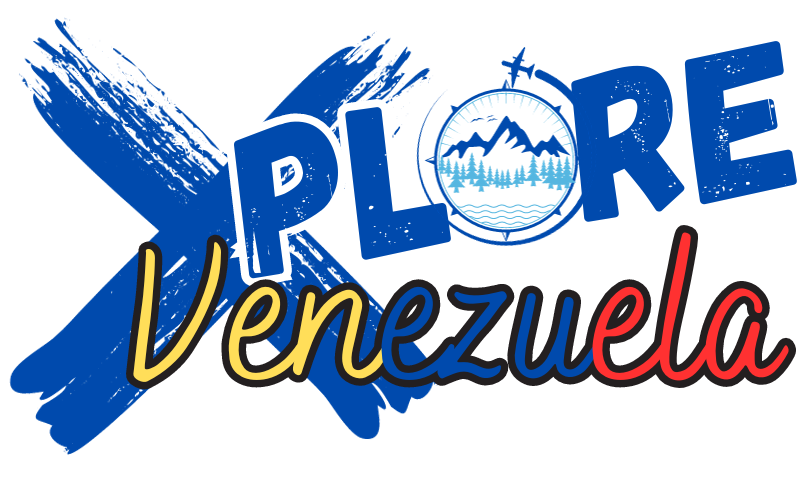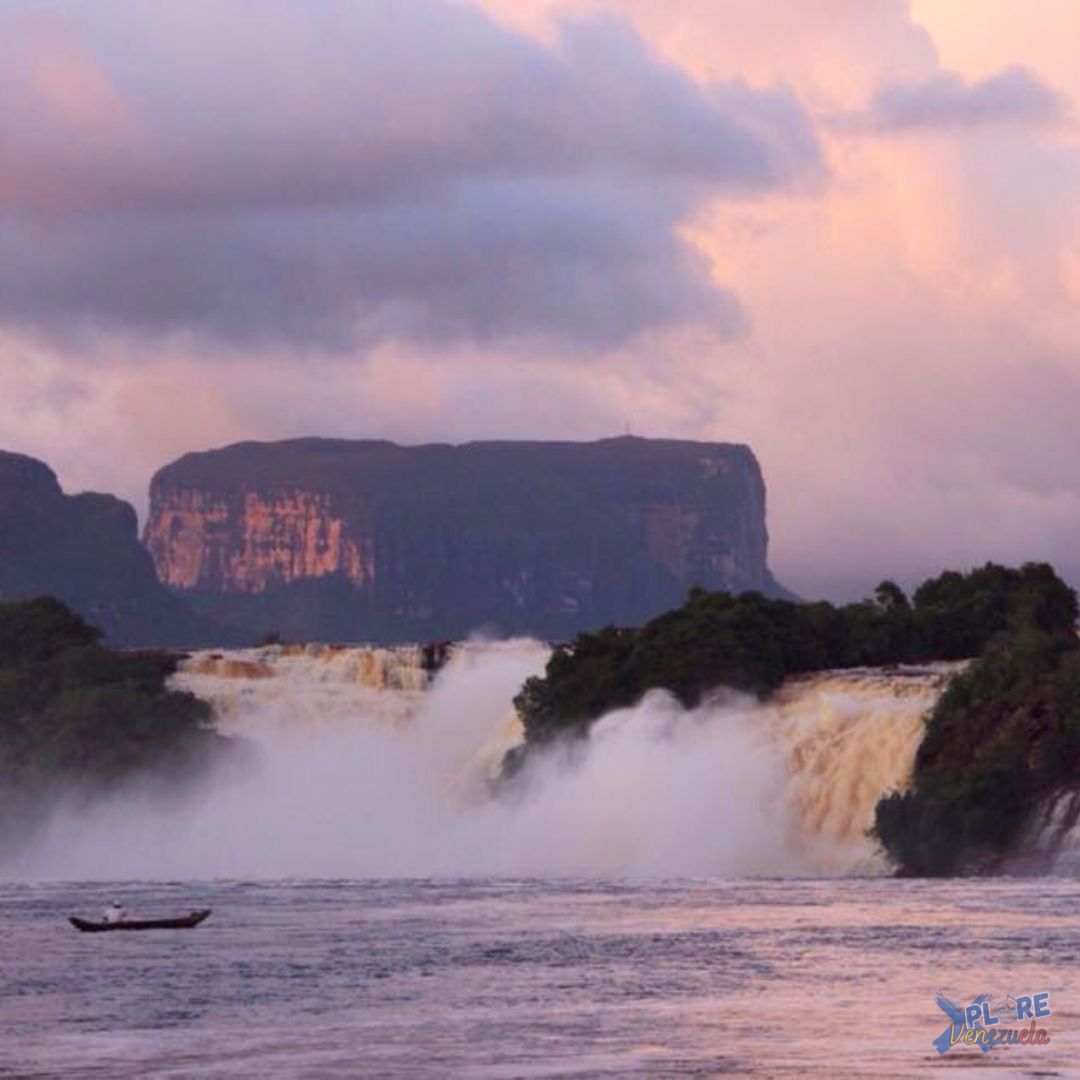Nestled in the heart of Venezuela, Canaima National Park is a captivating testament to the country’s unparalleled natural beauty. This UNESCO World Heritage site encompasses over 30,000 square kilometers, establishing itself as one of the largest national parks globally. Its vast wilderness unfolds like a living tapestry, revealing lush rainforests, towering tepuis (tabletop mountains), and cascading waterfalls that weave together to create a breathtaking symphony of nature.
In this chapter, XploreVenezuela.com invites you to discover one of the most breathtaking destinations on the planet. Nestled within Canaima National Park, home to the world’s highest waterfall and the oldest rock formations, this remarkable place has served as the backdrop for numerous Hollywood movies and Disney tales. Canaima National Park unfolds a rich history steeped in indigenous cultures and ancient landscapes that have stood the test of time. As travelers embark on a captivating journey from Caracas to this natural wonder, they are immersed in an awe-inspiring adventure, traversing diverse ecosystems and encountering unique flora and fauna. The expedition itself becomes an integral part of the experience, providing glimpses into the cultural tapestry of Venezuela.
For those seeking an immersive stay within the park, there are five exceptional accommodations that seamlessly blend with the surrounding environment. These lodgings not only provide comfort and convenience but also offer an intimate connection with the natural wonders of Canaima. Each place to stay within the park is a gateway to unparalleled experiences, from guided hikes to mesmerizing encounters with the indigenous Pemon people, creating memories that will linger long after leaving this pristine haven. Canaima National Park beckons explorers and nature enthusiasts to partake in a journey that transcends the ordinary, inviting them to discover the magic of Venezuela’s untamed wilderness.
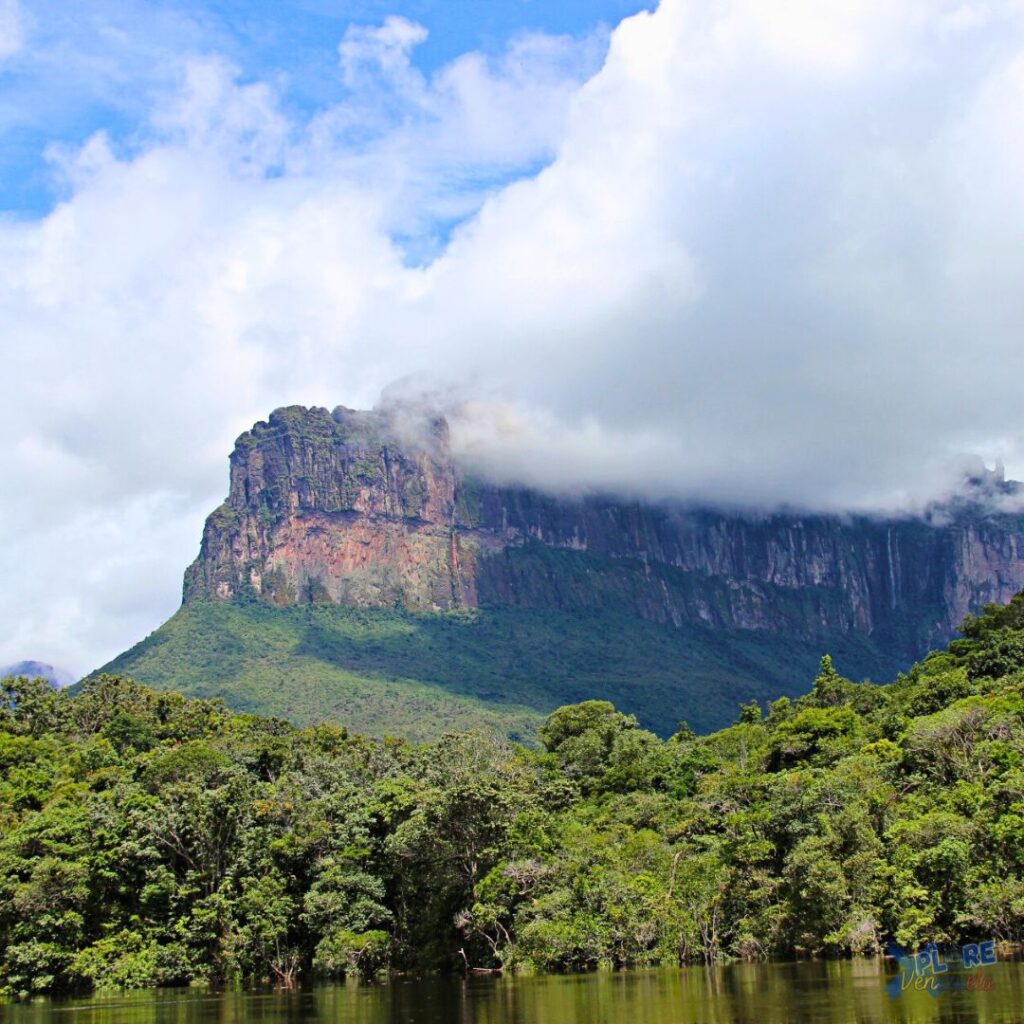
History of Canaima National Park
Canaima National Park is located in southeastern Venezuela, in the Gran Sabana region of the state of Bolívar. The park is situated within the Guiana Shield, a vast geological formation that also extends into parts of Guyana, Suriname, French Guiana, and Brazil. The geographical coordinates of Canaima National Park are approximately between 5.9667° N latitude and 62.5333° W longitude.
The park is known for its stunning natural beauty, featuring table mountains (tepui), waterfalls, and diverse ecosystems. Angel Falls, the world’s highest uninterrupted waterfall, is also located within the boundaries of Canaima National Park. Access to the park is often through the town of Canaima, which serves as a gateway for visitors exploring this unique and ecologically significant area.
Canaima National Park boasts a rich history that stretches across millennia, rooted in the ancient presence of the indigenous Pemon people. These resilient inhabitants, having dwelled in this unspoiled expanse for thousands of years, maintain an enduring spiritual bond with the park’s breathtaking topography, notably its towering tepuis or tabletop mountains. The Pemon community, still integral to the region’s fabric, contributes to the park’s cultural vibrancy. In a pivotal moment in 1962, recognizing the ecological significance of Canaima, it was officially designated a national park. This protective measure aimed to safeguard the park’s extraordinary biodiversity, encompassing vibrant tropical rainforests, cascading waterfalls, and a myriad of unique wildlife species, creating a sanctuary for both nature and culture to thrive harmoniously.
How to Get There from Caracas
Getting to Canaima National Park from Caracas involves a combination of air and land travel. The most common route is to take a domestic flight from Simón Bolívar International Airport in Caracas to Canaima Airport, located within the park. These flights typically take around an hour and provide passengers with breathtaking aerial views of the park’s dramatic landscapes.
Once in Canaima national park, visitors can arrange ground transportation to explore different areas of the park. Local guides and tour operators offer a variety of options, from boat trips along the Carrao River to trekking adventures that lead to the base of towering waterfalls.
Places to Stay in Canaima National Park
- Waku Lodge
Waku Lodge is a luxurious eco-friendly resort nestled on the shores of Canaima Lagoon, overlooking the waterfalls and tepuis. For the enjoyment of this space, they offer different areas for recreation, reading and rest. The rooms have hot water and air conditioning. WiFi is located in the common areas.
- Campamento Tapuy
For a more immersive experience, consider staying at Campamento Tapuy, an eco-camp that provides rustic yet comfortable accommodations. Located near the Kavak River, this camp offers visitors a chance to connect with nature while enjoying guided excursions to nearby attractions.
- Ucaima Camp
Situated on Orchid Island, Ucaima Camp provides a unique lodging experience with cozy cabins overlooking the mesmerizing Canaima Lagoon. The camp organizes various excursions, including visits to the iconic Angel Falls, the world’s highest uninterrupted waterfall.
- Campamento Canaima
Campamento Canaima is for those seeking an off-the-beaten-path adventure, their facilities have an unbeatable location, where you will be immersed in Venezuelan nature, in our comfortable facilities. Despite being in the middle of the Canaima jungle, you will have all the necessary amenities to make your stay unique and unforgettable.
- Campamento Parakaupa
Located in the Tururiwaipa Sector of the Canaima Indigenous Community, Western Sector of the spectacular Canaima National Park, one of the oldest and most biodiverse areas on the planet, Parakaupa Camp offers its visitors a unique experience surrounded by the cultural and natural riches of our country.
Canaima National Park: Angel Falls
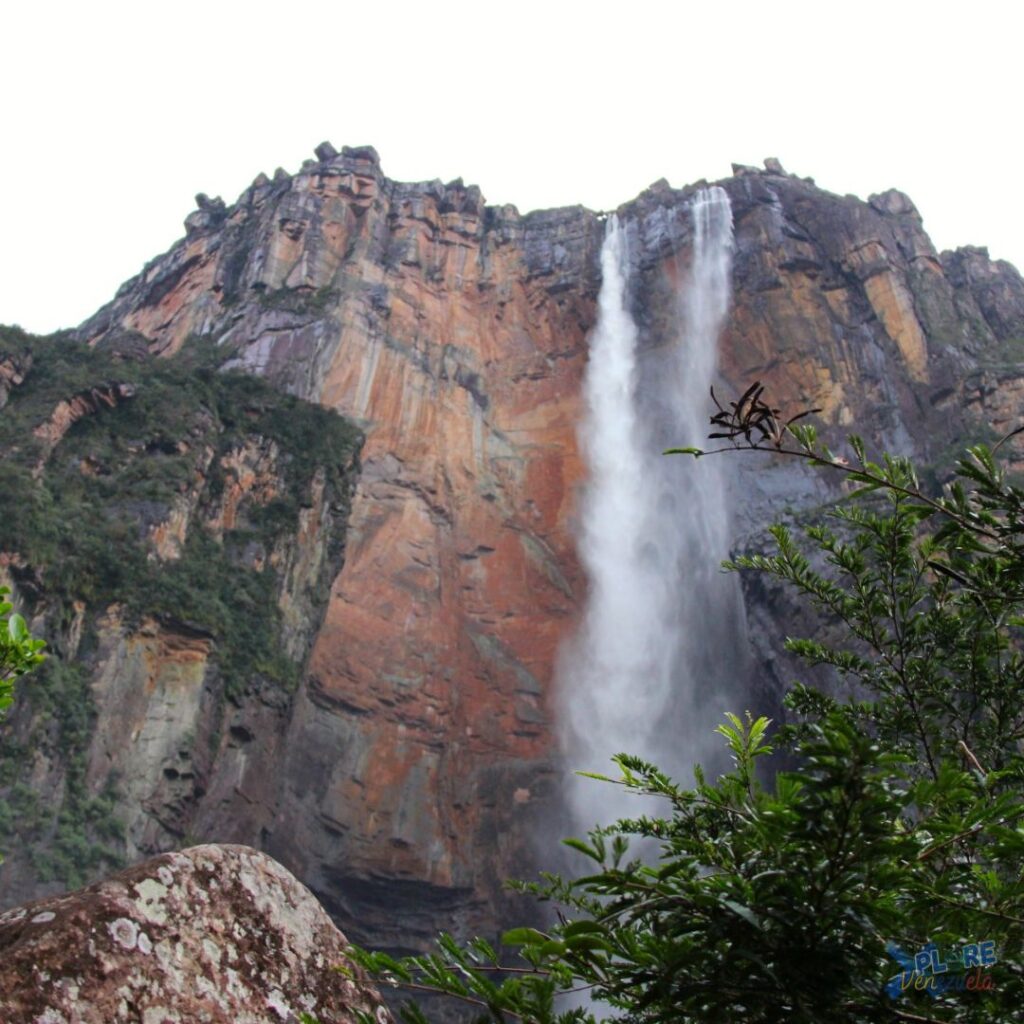
Deep within the heart of the Venezuelan jungle lies a natural marvel that captivates the imagination and inspires awe—Angel Falls, the world’s tallest waterfall. Named after Jimmy Angel, the aviator who first spotted this breathtaking cascade in 1933, the falls are a testament to the raw, untamed beauty of nature.
Location and Formation: Angel Falls is situated in Canaima National Park, a UNESCO World Heritage site, in the Gran Sabana region of Venezuela. The falls plunge dramatically from the summit of Auyán-tepui, a massive table mountain that rises abruptly from the surrounding landscape. At 3,212 feet (979 meters), Angel Falls boasts a continuous drop nearly 20 times the height of Niagara Falls, making it a true giant among waterfalls.
The falls are formed by the waters of the Churún River, which flows from the summit of Auyán-tepui and hurtles off the sheer cliff face, creating a mesmerizing spectacle. The falls are at their most impressive during the rainy season when the water flow is at its peak, enveloping the surrounding cliffs in a fine mist.
Getting There: Visiting Angel Falls is an adventure in itself. From Canaima, travelers embark on a river and jungle expedition, navigating through dense forests and vibrant landscapes. The final leg of the journey involves a hike to the base of the falls, offering stunning views of the surrounding wilderness.
Flora and Fauna: The area surrounding Angel Falls is a haven for biodiversity, with dense rainforests and unique ecosystems. Auyán-tepui, the plateau from which the falls descend, is home to a variety of plant and animal species found nowhere else on Earth. The Tepui region is often referred to as the “Lost World,” a term popularized by Sir Arthur Conan Doyle’s novel of the same name.
The park is home to a rich array of wildlife, including exotic birds, insects, and mammals. Toucans, parrots, and hummingbirds add vibrant splashes of color to the lush greenery, while howler monkeys and jaguars lurk in the shadows, creating a harmonious yet untamed natural symphony.
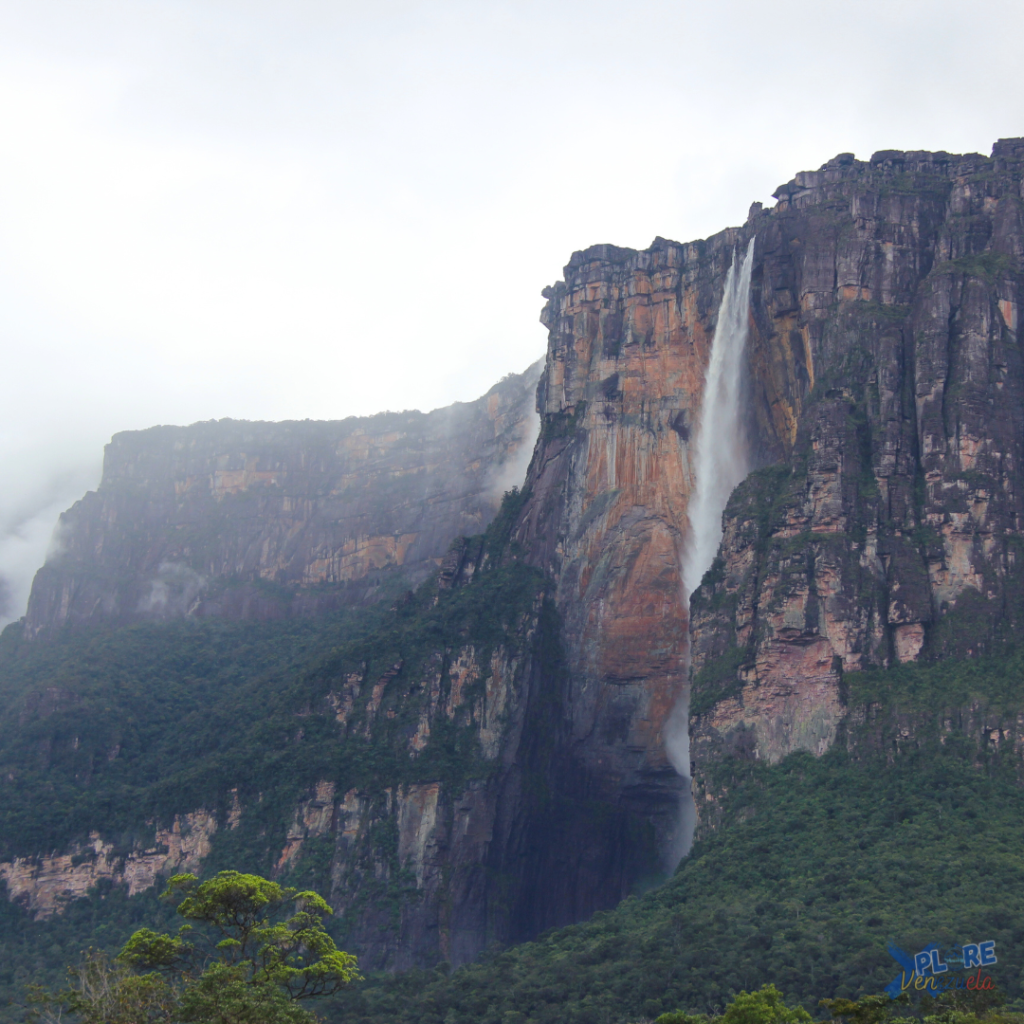
Cultural Significance: The Pemon indigenous people, who inhabit the region, consider Auyán-tepui and Angel Falls sacred. The falls, known as “Kerepakupai Merú” in the Pemon language, are steeped in local mythology and are integral to the cultural identity of the Pemon people. Visitors often have the opportunity to learn about the indigenous customs and traditions, adding a cultural dimension to their experience.
Preservation Challenges: While Angel Falls continues to draw admirers from around the world, it also faces preservation challenges. Increased tourism and environmental concerns pose threats to the delicate ecosystems surrounding the falls. Efforts are underway to balance the desire for exploration with the need to protect this natural wonder for future generations.
Angel Falls stands as a testament to the raw power and beauty of nature. Its remote location, unique ecosystems, and cultural significance make it a destination like no other. Visiting Angel Falls is not just a journey to witness a majestic waterfall; it’s an immersion into a world of unparalleled natural wonders and cultural richness, reminding us of the importance of preserving and appreciating the delicate balance of our planet’s ecosystems.
Nestled in southeastern Venezuela, Canaima National Park is a mesmerizing tapestry of natural wonders and cultural heritage that captivates the adventurous soul. The park unfolds a narrative woven by the ancient traditions of the indigenous Pemon people, adding a profound layer of cultural richness to its already breathtaking landscapes. Towering tabletop mountains, known as tepuis, adorn the horizon, creating an otherworldly panorama that has inspired countless explorers and artists.
The allure of Canaima lies not only in its geological marvels but also in the sheer diversity of flora and fauna that call this sanctuary home. Visitors can embark on exhilarating journeys to witness cascading waterfalls like the iconic Angel Falls, the world’s highest uninterrupted waterfall. Accommodations range from luxurious lodges to rustic campsites, ensuring that every traveler finds a perfect retreat amidst the park’s raw beauty. A sojourn in Canaima promises an intimate connection with nature, leaving an indelible mark on the adventurous spirit and forging memories that endure a lifetime.
